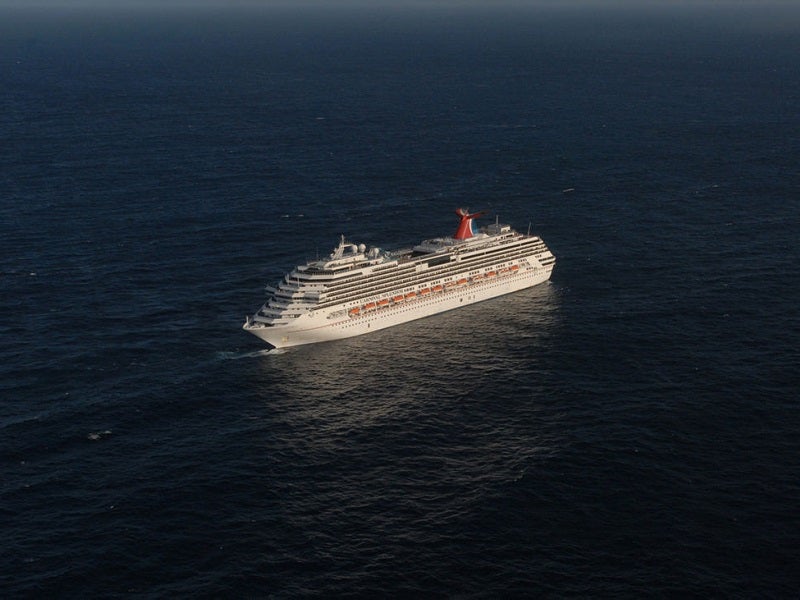
The International Maritime Organization (IMO) has set a goal to halve greenhouse gas emissions by 2050, as the sector accounts for more than 2% of global emissions.
The main challenge for cruise lines is to reduce emissions in a cost-effective way so they remain sustainable, profitable and competitive. Currently, operators use conventional heavy fuel oil to power their vessels because it’s both cheap and widely available – however, it causes high levels of pollution.
Luxury cruise operator Carnival Corporation emitted nearly ten times more sulphur oxide around European coasts than did all 260 million European cars in 2017, according to sustainable transport group Transport & Environment.
Many cruise ships are installing exhaust cleaning systems, or ‘scrubbers’, but environmentalists have claimed that the open-loop variant of this system sends polluted wash-water back into the ocean, therefore damaging the marine ecosystem.
However, more cruise lines are trialling alternative fuels. In January 2020, to help decarbonise the shipping industry and provide an alternative renewable fuel source, Samsung Heavy Industries, MISC, Lloyd’s Register (LR) and MAN Energy Solutions launched an ammonia-fuelled tanker project. While this will be first tested on tankers, the question lies whether it can be a potential choice for cruise ships.
LR’s global brand and external relations senior coordinator for marine & offshore, Paul Carrett, discusses whether ammonia could be a game-changer for sustainable shipping.

US Tariffs are shifting - will you react or anticipate?
Don’t let policy changes catch you off guard. Stay proactive with real-time data and expert analysis.
By GlobalDataVarsha Saraogi: How did the idea to launch an ammonia-powered tanker come about and when is the project due to be launched?
Paul Carrett: The idea is timely as LR research indicates that zero-emission vessels need to enter the fleet by 2030 at the latest if the maritime industry is to successfully meet the IMO ambitions of at least 50% reduction in greenhouse gases by 2050.
Zero-emission vessels development needs full-scale prototypes and pilot studies now, exploiting any available opportunities that can enable early adoption. The next decade will require substantial and collaborative input from all maritime stakeholders as shipping considers its decarbonisation options.
LR has been assessing future fuels for some time. Our study last year with A.P. Moller – Maersk found that the best-positioned fuels for research and development into achieving zero net emissions for shipping are alcohol, biomethane, and ammonia.
The target date for approval in the principle of the design is September this year. MAN has a plan in place for the development of the engine and the engine is planned to be available in 2024.
VS: How can using ammonia help to decarbonise the cruise industry?
PC: Ammonia is one of the pathways towards zero-carbon emitting vessels. Using ammonia as a marine fuel has the potential in the future to be created from renewable, primary-energy sources such as wind, hydropower or solar.
Innovative zero-emission technologies, such as wind, hydrogen fuel cells and batteries all have the potential to reduce greenhouse emissions, and we have experience with these already. The next step is to demonstrate that these are viable alternatives to hydrocarbon propelled shipping, at least by 2030.
VS: How does ammonia compare to using hydrogen in terms of eco-friendly fuels for cruise vessels?
PC: One of the conclusions of our Zero-emission vessels: Transition Pathways study was that in the decade 2020-2030, easy to store zero-carbon fuels may be more attractive whilst waiting for further technology development on the more complex to store zero-carbon fuels.
In this respect, ammonia and methanol have an advantage when compared to hydrogen, especially when the revenue lost due to the storage space requirements are significantly high and the voyage costs are relatively low. In other words, if the cargo space is of high value it may be more cost-effective to pay for a more expensive fuel and bunker more frequently to reduce the overall cost.
VS: What are the main challenges facing the cruise industry when it comes to achieving the IMO’s target?
PC: Many see 2020 as marking the start of the decade of decarbonisation as maritime stakeholders will continue to assess what is required to achieve the IMO’s 2050 greenhouse gas ambitions and the opportunities and challenges presented by the shift to a zero-carbon future. The transition is a long-term one and it is accepted that a variety of operational and asset investment strategies will need to be considered. Complex choices lie ahead and navigating this change will involve industry collaboration as well as access to expert advice and insight.
VS: How has the cruise industry evolved from the past decade in terms of sustainability?
PC: Sustainability and the need to decarbonise were dominant topics of discussion during Climate Week in New York last September, an event that coincided with the Launch of the Getting to Zero Coalition and efforts of activists like Greta Thunberg are ensuring that the climate change emergency is part of the global conversation. It has been discussed by world and industry leaders at Davos this week.
Decarbonisation has also become an agenda fixture at shipping events and given the IMO’s GHG ambitions outlined in April 2018, maritime attentions are firmly focused on the need for the industry to collaborate and work collectively to address the challenges ahead.
VS: How will the industry change in the future and will ammonia become the most eco-friendly fuel?
PC: Achieving net zero will predominantly be an operating expense rather than a capital expenditure challenge – ships will have to adapt, potentially requiring new fuel tanks, modified engines and fuel supply systems, but this will be a very small element of the total cost of operation. Work undertaken by LR forecasts that future fuels are likely to be two to three times more expensive to produce compared with today’s fuels. In the future, we expect to see a diverse range of zero-carbon technologies [and] fuels deployed across the world’s fleet. Ammonia is just one of the pathways towards zero-carbon emitting vessels.



